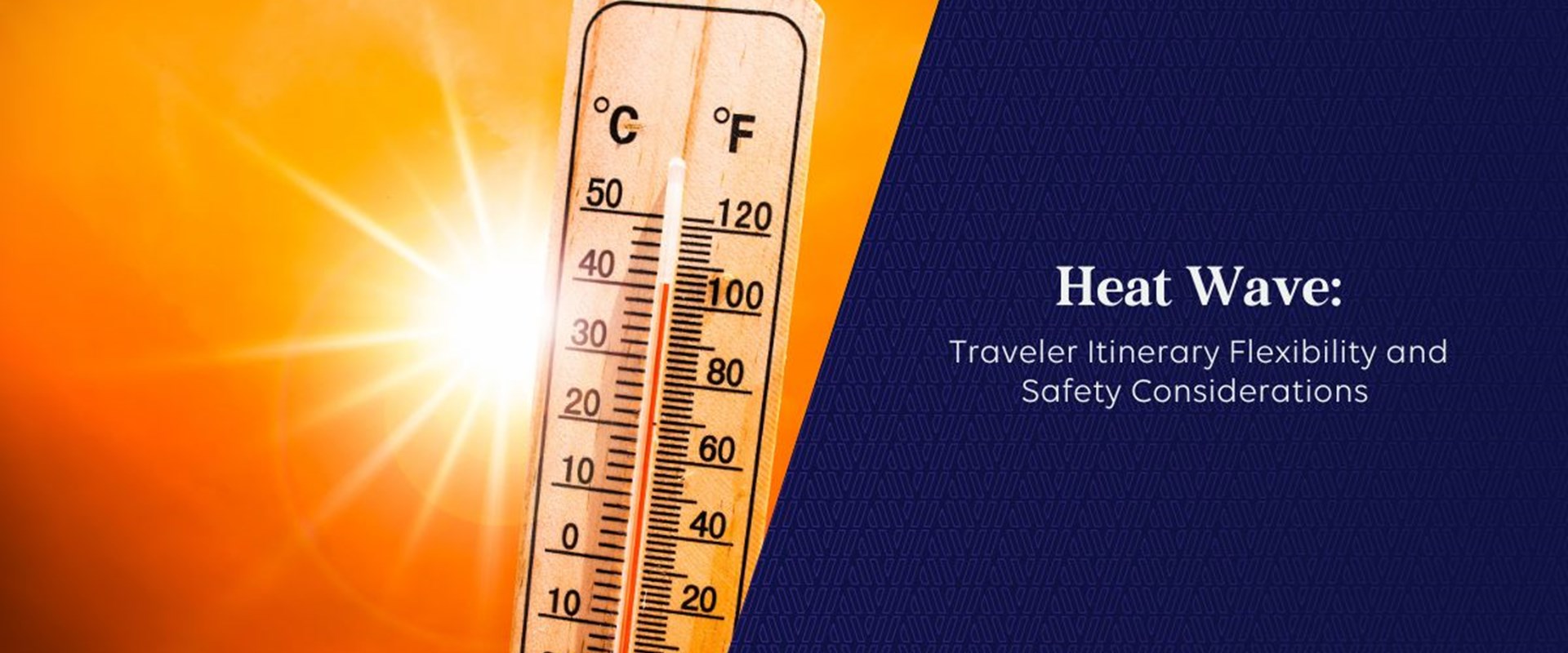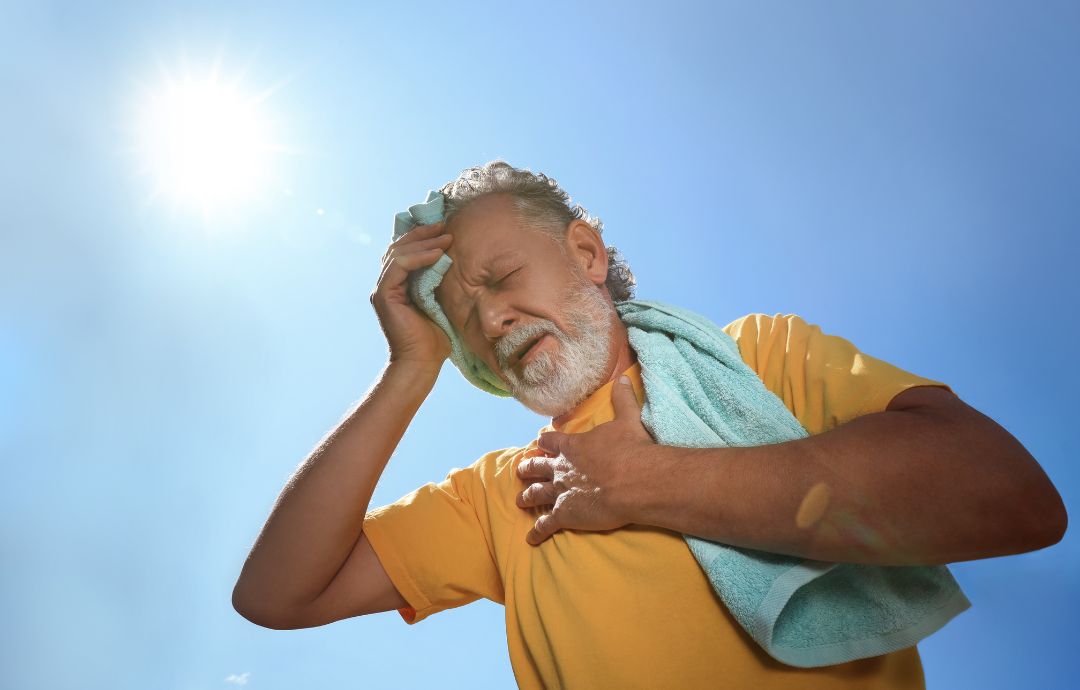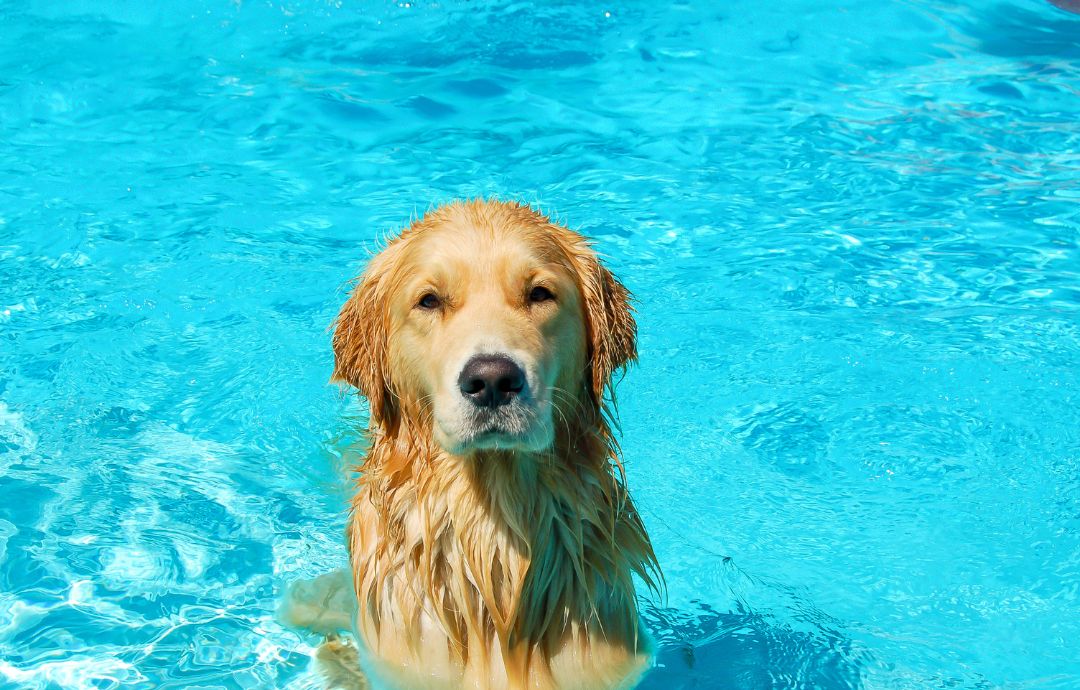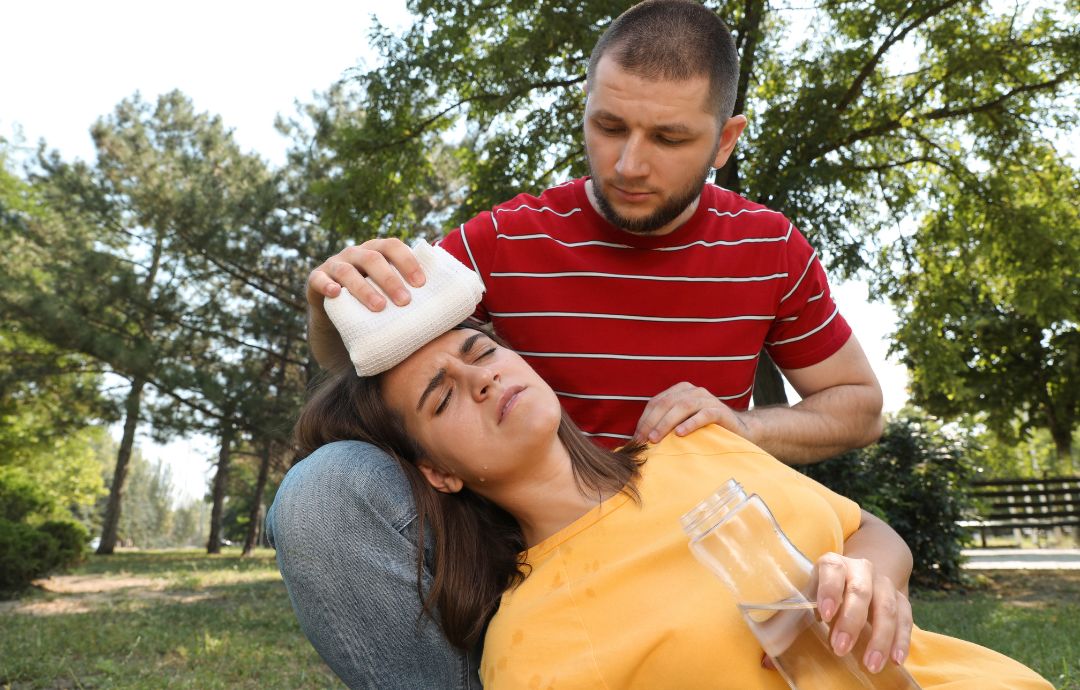Important Information
The information contained in this website is not intended to be an offer to sell or a solicitation in connection with any product or service by Trawick International Inc., in any jurisdiction where such an offer or solicitation would be unlawful or in which Trawick International, Inc., is not qualified to do so. Products and services described in this website may not be available in all jurisdictions. Not all insurance products described in this website are available to all persons in all States, Countries, or other jurisdictions at all times.
All products contain certain conditions, restrictions, limitations and eligibility requirements. The information contained in this website is not intended to be a complete description of all terms, exclusions and conditions applicable to the products and services. For complete terms, exclusions and conditions applicable to the products offered please contact Trawick International.
By using this website, you agree to the terms of its use. If you do not agree to these terms, PLEASE DO NOT USE THIS WEBSITE. For additional information or questions, please contact Trawick International or your independent insurance broker or agent.
TERMS & CONDITIONS OF USE
Effective Date: November 1, 2024
INTRODUCTION
THESE TERMS & CONDITIONS OF USE (“T&C”) GOVERN YOUR USE OF TRAWICK INTERNATIONAL, INC.’S (“COMPANY”, “WE”, “OUR”, OR “US”) WEBSITE LOCATED AT WWW.TRAWICKINTERNATIONAL.COM OR OTHER WEBSITES CONTROLLED BY COMPANY AND ITS AFFILIATES AS WELL AS ANY DOCUMENTS EXPRESSLY INCORPORATED BY REFERENCE AND ANY RULES AND POLICIES PUBLISHED ON THIS WEBSITE (THE “WEBSITE”).
BY ACCESSING THIS WEBSITE, YOU AGREE TO THE T&C, REVISIONS, AND MODIFICATIONS. ALL CHANGES ARE EFFECTIVE IMMEDIATELY UPON POSTING, AND APPLY TO ALL ACCESS TO AND USE OF THE WEBSITE THEREAFTER. ANY CHANGES WILL NOT EFFECT ANY DISPUTES ARISING PRIOR TO THE EFFECTIVE DATE OF THE CHANGE. WE MAY SEND YOU NOTICES WITH RESPECT TO THE WEBSITE IN VARIOUS MEDIUMS, INCLUDING BY EMAIL ADDRESS, POSTAL MAIL, AND/OR BY POSTING ON THE WEBSITE.
ARBITRATION NOTICE: EXCEPT FOR CERTAIN TYPES OF DISPUTES DESCRIBED IN THE “ARBITRATION AND CLASS ACTION WAIVER” SECTION BELOW, AND IF YOU DO NOT OPT-OUT AS SET FORTH IN THAT SAME SECTION, YOU AGREE THAT DISPUTES BETWEEN YOU AND COMPANY OR ITS AFFILIATES WILL BE RESOLVED BY BINDING, INDIVIDUAL ARBITRATION, AND YOU WAIVE YOUR RIGHT TO BRING OR RESOLVE ANY DISPUTE AS, OR PARTICIPATE IN, A CLASS, CONSOLIDATED, REPRESENTATIVE, COLLECTIVE, OR PRIVATE ATTORNEY GENERAL ACTION OR ARBITRATION.
ACCESS TO THIS WEBSITE
To access the Website or some of its resources, you may be asked to provide certain personal details or other information. It is a condition of your use of the Website that all the information you provide on the Website is correct, current, and complete.
In addition, certain other services of the Website, such as applying for coverage, may be governed by additional or different terms and conditions. You should carefully review those terms and conditions as they are referenced and/or presented to you.
We reserve the right to withdraw, amend, disable or suspend this Website, and any service or material we provide on the Website, in our sole discretion with or without notice. We will not be liable if for any reason all or any part of the Website is unavailable at any time or for any period. From time to time, we may restrict access to some parts of the Website, or the entire Website, to users, including registered users.
We have the right to disable any user name, password or other identifier, whether chosen by you or provided by us, at any time in our sole discretion for any or no reason, including if, in our opinion, you have violated any provision of the T&C.
PRIVACY
Your privacy matters to us. Your use of the Website is also subject to our Privacy Policy that is available online here (“Privacy Policy”) and is incorporated into and made a part of these Terms of Use. The Privacy Policy is subject to change, and you are encouraged to review the Privacy Policy whenever you supply the Website with any information because you agree that Company can collect, use, and share your information consistent with that policy.
RESTRICTIONS ON USE
You may use this Website only for your internal, non-commercial purposes. You agree not to use this Website in any way that violates any applicable federal, state, local or international law or regulation. You further agree to maintain and update your registration data as needed to keep it accurate, current and complete. You may not use this Website or any of the content, defined below, contained on it for any other purpose, including any unpermitted commercial purpose, unless we provide our prior written consent to such use.
Uses requiring our prior written consent include the following, without limitation:
- Co-branding this Website;
- Framing this Website;
- Using any robots, scrapers, spiders, data mining tools, or any similar device, tool, software, or process;
- Hyper-linking to specific product or coverage information; or
- Reselling or remarketing the content, as defined below.
"Co-branding" means displaying a name, logo, trademark or other means of attribution or identification of any party in a manner reasonably likely to give a user the impression that the other party has the right to display, publish or distribute this Website or its content. You will cooperate fully with Company and its affiliates in causing any unpermitted or unauthorized activity of yours or a third party authorized by you to cease immediately. To the extent that such unpermitted or unauthorized use continues after notice from Company or its affiliates, you agree to pay or reimburse us for any and all costs (including attorney fees if applicable) associated with ending or terminating such use.
You agree not to impersonate or attempt to impersonate the Company, a Company employee, another user or any other person or entity (including, without limitation, by using e-mail addresses associated with any of the foregoing).
PROHIBITED USES AND ACTIONS
Additionally, you specifically agree not to:
- decompile, reverse engineer, disassemble, modify, reduce the Website to human perceivable form or create derivative works based upon the Website or any part thereof;
- disable any licensing or control features of the Website;
- “frame” the Website or any portion thereof or otherwise cause the Website or its contents to appear to be provided by anyone except Company and its affiliates;
- merge the Website or materials with another program or create derivative works based on the Website or materials;
- remove, obscure, or alter any notice of the copyright or other proprietary legends on the Website or materials;
- sublicense, assign, translate, rent, lease, lend, resell for profit, distribute or otherwise assign or transfer the materials or access to the Website to others;
- use the Website by means of any automated program, expert system, electronic agent or “bot,” and shall not give any person or entity access to the Website;
- utilize any “scraping,” copying, republishing, licensing, or selling the data or information on the Website.
PURCHASES AND PAYMENT
Company accepts a variety of payment methods as reflected on the Website. Before you can submit a request for purchase using the Website, you may be required to provide a valid credit card number and associated information for a payment card that you are authorized to use, including any of or all of the following: (i) your name as it appears on the card; (ii) the credit or debit card type, (iii) the card’s expiration date; (iv) any activation numbers or codes needed to charge your card; and (v) the billing address or zip code or postal codes associated with your card. You authorize Company and/or its affiliates, payment processor to use information you submit to charge your card or other payment method for the price of purchase requested, in addition to any taxes, fees, and charges as described in the T&C, at our convenience, including as early as at the time of the purchase request is submitted.
PROPRIETARY INFORMATION & TRADE SECRETS
The material and content accessible from this Website and any other website Company or its affiliates owns, operates, licenses or controls (the “content”) is the proprietary information of Company and its affiliates or the party that provided the Content to us, and Company and its affiliates or such party retains all right, title and interest in the content. Accordingly, the Content may not be copied, distributed, republished, uploaded, posted, rented, leased, distributed, modified or transmitted in any way without the prior written consent of Company and its affiliates, except that you may print out a copy of the content solely for your own personal use. In doing so, you may not remove or alter, or cause the removal or alteration of, any copyright, trademark, trade name, service mark or any other proprietary notice or legend appearing on any of the content. Modification or use of the content, except as expressly provided herein, may violate Company’s and its affiliates’ intellectual property rights or a third party’s rights. Neither title nor intellectual property rights in the content are transferred or licensed to you by these Terms or your access of this Website.
Certain information provided to you by Company or its affiliates through non-public portions of the Website may be confidential or trade secret information. You may use or disclose such information only to the extent necessary for the purposes it was disclosed to you. You may not use the Website to circumvent the terms of any referral agreement or in any other manner that is not consistent with the business purpose of the Website. When reasonable, you must return or destroy such information when you have fulfilled such purpose.
INTELLECTUAL PROPERTY
Company and its affiliates (or the party that provided to Company) are the owner or licensee of all intellectual property rights on the Website (including trademarks, service marks and logos) and in the material published on it. Those works are protected by copyright laws and treaties around the world. All such rights are reserved, and we or those parties retain all rights with respect to such respective marks. In accessing the Website you agree that you will access its contents and use it solely for your personal, non-commercial use. The Website, including its contents, may not be downloaded, copied, reproduced, transmitted, stored, sold or distributed without the prior written consent of the copyright holder. This excludes downloading, copying and/or printing of pages of the Website for personal, non-commercial home use only.
The Company’s name and logo may not be used in any way, including in advertising or publicity pertaining to distribution of materials on this Website, without prior written permission. You are not authorized to use our logo as a hyperlink to this Website unless you obtain our written permission in advance, although we permit you to use certain designated features of the Website to use our logo as a hyperlink for designated purposes. You may link to our homepage, provided you do so in a way that is fair and legal and does not damage our reputation or take advantage of it, but you must not establish a link in such a way as to suggest any form of association, approval or endorsement on our part without our express written consent.
Except as provided below, none of the materials of the Website may be copied, distributed, displayed, downloaded, or transmitted in any form or by any means without the prior written permission of Company and its affiliates or the intellectual property right owner. Unauthorized use of any materials contained on this Website may violate copyright laws, trademark laws, the laws of privacy and publicity, and/or other regulations and statutes. If you believe that any of the materials infringe on any of your intellectual property rights or rights of others, please contact us immediately at the address provided below. Except as expressly provided herein, Company and its affiliates and the third parties reserve all rights with respect to the Materials, and may pursue all legally available options under both civil and criminal laws (and may cooperate with law enforcement agencies) in the event of any violations, including but not limited to the right to terminate accounts of any user who has infringed a third party’s copyright. Pursuant to Title 17, United States Code, Section 512(c)(2), notifications of claimed copyright infringement should be sent to the Designated Agent. ALL INQUIRIES NOT RELEVANT TO THE FOLLOWING PROCEDURE WILL NOT RECEIVE A RESPONSE.
HYPER-LINKS
We may hyper-link from the Website to other websites that are not maintained by, or related to, Company or its affiliates. Such hyper-links are provided as a service to you, and the other websites may not be officially sponsored by or affiliated with this Website or Company and its affiliates. Such other websites are solely responsible for their content. We are under no obligation to maintain any link on this Website and may remove any such link at any time in its sole discretion for any reason whatsoever. Access hyper-links and third party websites at your own risk.
COMPANY AND ITS AFFILIATES MAKE NO REPRESENTATIONS OR WARRANTIES ABOUT THE CONTENT OF HYPER-LINKED OR THIRD-PARTY WEBSITES. SUCH HYPER-LINKS ARE PROVIDED TO YOU “AS-IS” “WHERE IS,” AND WE SPECIFICALLY DISCLAIM ANY WARRANTIES WITH REGARD TO COMPLETENESS OR ACCURACY OF THESE HYPER-LINKS OR THE WEBSITES THAT ARE HYPER-LINKED TO THIS WEBSITE. THE INCLUSION OF ANY HYPER-LINK TO A THIRD-PARTY WEBSITE DOES NOT NECESSARILY IMPLY ENDORSEMENT BY OR AFFILIATION WITH COMPANY AND ITS AFFILIATES OF THAT WEBSITE.
SOCIAL MEDIA FEATURES
This Website may provide certain social media features that enable you to:
- link from your own or certain third-party websites to certain content on this Website.
- send e-mails or other communications with certain content, or links to certain content, on this Website.
- cause limited portions of content on this Website to be displayed or appear to be displayed on your own or certain third-party websites.
You may use these features solely as they are provided by us and solely with respect to the content they are displayed with and otherwise in accordance with any additional terms and conditions we provide with respect to such features. Subject to the foregoing, you must not:
- establish a link from any website that is not owned by you.
- cause the Website or portions of it to be displayed, or appear to be displayed by, for example, framing, deep linking or in-line linking, on any other site.
- link to any part of the Website other than the homepage.
- otherwise take any action with respect to the materials on this Website that is inconsistent with any other provision of these Terms of Use.
You agree to cooperate with us in causing any unauthorized framing or linking immediately to cease. We reserve the right to withdraw linking permission without notice. We may disable all or any social media features and any links at any time without notice in our discretion.
SUBMISSIONS
You hereby grant to Company and its affiliates the royalty-free, perpetual, irrevocable, worldwide, non-exclusive right and license to use, reproduce, modify, adapt, publish, translate, create derivative works from, distribute, perform and display all stories, anecdotes, “Similes,” content, remarks, suggestions, ideas, graphics, inventions, methods, process, algorithms or other information communicated to us through this Website (collectively, the “Submission”), and to incorporate any Submission into other works in any form, media or technology now known or later developed. We may use any submission in our business (including without limitation, for products or advertising) without incurring any liability for royalties or any other additional consideration of any kind, and will not incur any liability as a result of any similarities to the submission that may appear in our future operations. By providing a Submission, you warrant that you have the right to provide the Submission and that all moral rights in the Submission have been waived.
DISCLAIMER
COMPANY AND ITS AFFILIATES CANNOT AND DOES NOT GUARANTEE OR WARRANT THAT ANY FILES AVAILABLE FOR DOWNLOADING FROM THE INTERNET ARE FREE OF VIRUSES, WORMS, TROJAN HORSES OR OTHER CODE THAT MAY HAVE CONTAMINATING OR DESTRUCTIVE PROPERTIES. YOU ARE RESPONSIBLE FOR IMPLEMENTING SUFFICIENT PROCEDURES AND CHECKPOINTS TO SATISFY YOUR PARTICULAR REQUIREMENTS FOR SECURITY, FOR ACCURACY OF DATA INPUT AND OUTPUT, AND FOR MAINTAINING A MEANS EXTERNAL TO THIS WEBSITE FOR RECONSTRUCTING LOST DATA. WE DO NOT ASSUME ANY RESPONSIBILITY OR RISK FOR YOUR USE OF THE INTERNET OR THE WEBSITE.
USE THIS WEBSITE AT YOUR OWN RISK. EXCEPT AS MAY BE EXPRESSLY STATED IN OTHER APPLICABLE TERMS AND CONDITIONS OR SIMILAR AGREEMENT, THE CONTENT IS PROVIDED “AS IS” AND "AS AVAILABLE" AND WITHOUT WARRANTIES OF ANY KIND, EITHER EXPRESSED OR IMPLIED. WE DISCLAIM ALL WARRANTIES INCLUDING ANY IMPLIED WARRANTIES OF MERCHANTABILITY, FITNESS FOR A PARTICULAR PURPOSE, TITLE OR NON-INFRINGEMENT. WE DO NOT WARRANT THAT ANY FUNCTIONS OR CONTENT CONTAINED IN THIS WEBSITE WILL BE UNINTERRUPTED OR ERROR-FREE, THAT DEFECTS WILL BE CORRECTED, OR THAT THIS WEBSITE OR THE SERVER THAT MAKES IT AVAILABLE ARE FREE OF VIRUSES OR OTHER HARMFUL COMPONENTS. WE DO NOT WARRANT OR MAKE ANY REPRESENTATION REGARDING USE OF THE CONTENT OR RESULTS THEREOF IN TERMS OF ACCURACY, RELIABILITY OR OTHERWISE EXCEPT FOR THE PERSON AND/OR FOR THE USE INTENDED. THE CONTENT MAY INCLUDE TECHNICAL INACCURACIES OR TYPOGRAPHICAL ERRORS, AND WE MAY MAKE CHANGES OR IMPROVEMENTS AT ANY TIME. YOU, AND NOT COMPANY AND ITS AFFILIATES, ASSUME THE ENTIRE COST OF ALL NECESSARY SERVICING, REPAIR OR CORRECTION IN THE EVENT OF ANY LOSS OR DAMAGE ARISING FROM THE USE OF THIS WEBSITE OR THE CONTENT. WE MAKE NO WARRANTIES THAT YOUR USE OF THE CONTENT WILL NOT INFRINGE THE RIGHTS OF OTHERS AND ASSUME NO LIABILITY OR RESPONSIBILITY FOR ERRORS OR OMISSIONS IN SUCH CONTENT.
BY ACCESSING THIS WEBSITE, YOU UNDERSTAND THAT YOU MAY BE WAIVING RIGHTS WITH RESPECT TO CLAIMS THAT ARE AT THIS TIME UNKNOWN OR UNSUSPECTED, AND IN ACCORDANCE WITH SUCH WAIVER, YOU ACKNOWLEDGE THAT YOU HAVE READ AND UNDERSTAND, AND HEREBY EXPRESSLY WAIVE, THE BENEFITS OF SECTION 1542 OF THE CIVIL CODE OF CALIFORNIA, AND ANY SIMILAR LAW OF ANY STATE OR TERRITORY, WHICH PROVIDES AS FOLLOWS: "A GENERAL RELEASE DOES NOT EXTEND TO CLAIMS WHICH THE CREDITOR DOES NOT KNOW OR SUSPECT TO EXIST IN HIS OR HER FAVOR AT THE TIME OF EXECUTING THE RELEASE, WHICH IF KNOWN BY HIM OR HER MUST HAVE MATERIALLY AFFECTED HIS OR HER SETTLEMENT WITH THE DEBTOR."
RELIANCE
The descriptions of products and services contained on this Website are intended to provide a reference guide to the types of products and services offered by Company and its affiliates and are not intended to be relied upon by clients or business partners. Some products and services referenced on this Website may not be available in all areas. Please contact us directly if you wish to obtain specific information concerning the products and services referenced on this Website. All of the information in this Website, whether historical in nature or forward-looking, speaks only as of the date the information was posted on this Website, and we do not undertake any obligation to update such information or to remove such information from this Website, if it is not or is no longer accurate or complete.
LIMITATION ON LIABILITY
TO THE EXTENT PERMITTED BY LAW OR REGULATION, COMPANY AND ITS AFFILIATES, ITS SUBSIDIARIES, LICENSORS, SERVICE PROVIDERS, CONTENT PROVIDERS, EMPLOYEES, AGENTS, OFFICERS AND DIRECTORS WILL NOT BE LIABLE FOR ANY INCIDENTAL, DIRECT, INDIRECT, PUNITIVE, ACTUAL, CONSEQUENTIAL, SPECIAL, EXEMPLARY OR OTHER DAMAGES, INCLUDING LOSS OF USE, REVENUE OR INCOME, PAIN AND SUFFERING, EMOTIONAL DISTRESS, OR SIMILAR DAMAGES, EVEN IF ADVISED OF THE POSSIBILITY OF SUCH DAMAGES THAT RELATES IN ANY WAY TO THE USE OF OUR WEBSITE OR WHICH MAY ARISE OUT OF ANY PERSON'S ACCESS OR INABILITY TO ACCESS THIS WEBSITE OR RELIANCE ON THE INFORMATION CONTAINED ON THIS WEBSITE. TO THE EXTENT PERMITTED BY LAW, IN NO EVENT WILL THE COLLECTIVE LIABILITY OF COMPANY AND ITS AFFILIATES AND ITS SUBSIDIARIES, LICENSORS, SERVICE PROVIDERS, CONTENT PROVIDERS, EMPLOYEES, AGENTS, OFFICERS, AND DIRECTORS TO ANY PARTY (REGARDLESS OF THE FORM OF ACTION, WHETHER IN CONTRACT, TORT, OR OTHERWISE) EXCEED THE GREATER OF $100 OR THE AMOUNT YOU PAID TO COMPANY OR ITS AFFILIATES FOR THE APPLICABLE CONTENT OR SERVICE OUT OF WHICH LIABILITY AROSE. BECAUSE SOME STATES OR JURISDICTIONS DO NOT ALLOW THE EXCLUSION OR THE LIMITATION OF LIABILITY FOR CONSEQUENTIAL OR INCIDENTAL DAMAGES, IN SUCH STATES OR JURISDICTIONS, COMPANY’S LIABILITY SHALL BE LIMITED TO THE EXTENT PERMITTED BY LAW IN SUCH STATE OR JURISDICTION WHICH YOU HEREBY CONSENT TO.
INDEMNIFICATION
You agree to defend, indemnify, and hold harmless Company and its affiliates, its subsidiaries, licensors, content providers, service providers, employees, agents, officers, directors and contractors (the “Indemnified Parties”) from any breach of these T&C by you, including any use of the content other than as expressly authorized herein, and any claim that your submission violates a third party’s intellectual property or other rights, including the rights of publicity and privacy, or defames a third party. You agree that the Indemnified Parties will have no liability in connection with any such breach or unauthorized use, and you agree to indemnify any and all resulting loss, damages, judgments, awards, costs, expenses and attorneys’ fees of the Indemnified Parties in connection therewith. You will also indemnify and hold the Indemnified Parties harmless from and against any claims brought by third parties arising out of your use of the content and this Website.
INFORMATION YOU PROVIDE
You may not post, send, submit, publish or transmit in connection with the Website any material that:
- you do not have the right to post, send, submit, publish or transmit, including any proprietary material of a third party;
- advocates illegal activity or discusses an intent to commit an illegal act;
- is vulgar, obscene, pornographic or indecent;
- does not pertain directly to the Website;
- threatens or abuses others; or libels, defames, invades privacy or stalks; or is racist, harassing, threatening or offensive;
- seeks to exploit or harm minors or older adults by exposing them to inappropriate content, asking for personally identifiable details or otherwise;
- infringes any intellectual property right or other right of any entity or person, including violating anyone’s copyrights or trademarks, or their rights of privacy or publicity;
- violates any law or may be considered to violate any law;
- impersonates or misrepresents your connection to any other entity or person, or otherwise manipulates headers or identifiers to disguise the origin of the content;
- advertises any commercial endeavor (e.g., products or services) or otherwise engages in any commercial activity (e.g., conducting raffles or contests, displaying sponsorship banners or soliciting goods or services, or any combination thereof) except as may be specifically authorized on this Website;
- solicits funds, advertisers or sponsors;
- includes programs that contain viruses, worms, Trojan horses or any other computer code, files or programs designed to interrupt, destroy or limit the functionality of any computer software, hardware or telecommunications or any combination thereof;
- amounts to a "pyramid" or similar scheme;
- disobeys any policy or regulations established from time to time regarding use of this Website or any networks connected to this Website; or
- contains hyper-links to other websites that contain content that falls within any description set forth above.
WE RESERVE THE RIGHT TO MONITOR USE OF THIS WEBSITE IN ORDER TO DETERMINE COMPLIANCE WITH THESE TERMS OF USE, AND RESERVES THE RIGHT TO REMOVE OR REFUSE ANY INFORMATION FOR ANY REASON. NOTWITHSTANDING THESE RIGHTS, YOU REMAIN RESPONSIBLE SOLELY FOR THE CONTENT OF YOUR SUBMISSIONS. YOU ACKNOWLEDGE AND AGREE THAT NEITHER COMPANY AND ITS AFFILIATES NOR ANY THIRD PARTY THAT PROVIDES CONTENT TO US WILL ASSUME OR HAVE ANY LIABILITY FOR ANY ACTION OR INACTION BY US OR SUCH THIRD PARTY WITH RESPECT TO ANY SUBMISSION OF YOURS. EXCEPT AS EXPRESSLY PROVIDED HEREIN, COMPANY AND ITS AFFILIATES AND THE THIRD PARTIES RESERVE ALL RIGHTS WITH RESPECT TO THE WEBSITE, AND MAY PURSUE ALL LEGALLY AVAILABLE OPTIONS UNDER BOTH CIVIL AND CRIMINAL LAWS (AND MAY COOPERATE WITH LAW ENFORCEMENT AGENCIES) IN THE EVENT OF ANY VIOLATIONS.
ARBITRATION AND CLASS ACTION WAIVER
PLEASE READ THE FOLLOWING SECTION CAREFULLY BECAUSE IT REQUIRES YOU TO ARBITRATE CERTAIN DISPUTES AND CLAIMS AND LIMITS THE MANNER IN WHICH YOU CAN SEEK RELIEF FROM COMPANY. Excluding claims for injunctive or other equitable relief, for all other claims related to the Website, including any goods or services purchased through the Website, any dispute or controversy arising out of or relating to this Agreement, including without limitation, any and all disputes, claims (whether in tort, contract, statutory or otherwise) or disagreements concerning the existence, breach, interpretation, application or termination of this Agreement shall be resolved by final and binding arbitration pursuant to the Federal Arbitration Act and in accordance with the JAMS Inc. Comprehensive Arbitration Rules & Procedures then in effect. There shall be no right or authority for any claims to be arbitrated on a class action basis. The arbitration shall take place in Fairhope, Alabama or at the option of the party seeking relief, by telephone, online, or via written submissions alone; however such election shall not prohibit Company from attending such an arbitration in person. Said arbitration shall be administered by JAMS. The arbitral tribunal (“Tribunal”) shall be composed of one arbitrator, who shall be independent and impartial. If the parties fail to agree on the arbitrator within twenty (20) calendar days after the initiation of an arbitration hereunder, JAMS shall appoint the arbitrator. The arbitration shall be conducted in the English language. The decision of the arbitrator will be final and binding on the parties, subject to all rights of appeal allowed by JAMS. Judgment on any award(s) rendered by the arbitrator may be entered in any court having jurisdiction thereof. The arbitrator shall have the authority to determine arbitrability of any disputes arising out of or relating to this Agreement. Nothing in this Section shall prevent either party from seeking immediate injunctive relief from any court of competent jurisdiction, and any such request shall not be deemed incompatible with the agreement to arbitrate or a waiver of the right to arbitrate. The parties undertake to keep confidential all awards in their arbitration, together with all confidential information, all materials in the proceedings created for the purpose of the arbitration and all other documents produced by the other party in the proceedings and not otherwise in the public domain, save and to the extent that disclosure may be required of a party by legal duty, to protect or pursue a legal right or to enforce or challenge an award in legal proceedings before a court or other judicial authority. The arbitrator shall award all fees and expenses, including reasonable attorney’s fees, to the prevailing party. Any judgment rendered by the arbitrator may be entered in any court of competent jurisdiction.
You may choose to opt out of the agreement to arbitrate by mailing a written opt-out notice (“Notice”) to Company. The Notice must be postmarked no later than thirty (30) days after the date you accept these T&C for the first time. The Notice must be mailed to: Trawick International, Inc., Post Office Box 2284 Fairhope, Alabama USA 36533, to the attention of General Counsel. This procedure is the only mechanism by which you can opt out of the agreement to arbitrate. Opting out of the agreement to arbitrate has no effect on any other parts of this Agreement, or any previous or future arbitration agreements that you have entered into with Company or its affiliates.
GOVERNING LAW
These Terms of Use are governed and interpreted by the laws of Alabama, United States of America notwithstanding any principles of conflicts of law. We make no representation that materials on this Website are appropriate or available for use in other locations. Those who choose to access this Website from other locations do so on their own initiative and are responsible for compliance with applicable local laws.
If you are a consumer, the provisions in these T&C are intended to be only as broad and inclusive as is permitted by the laws of your State of residence. If you are a New Jersey consumer, the terms of “Disclaimer” and “Limitation of Liability” sections above do not limit or waive your rights as a consumer under New Jersey law and the provisions in this Agreement are intended to be only as broad and inclusive as is permitted by the laws of the State of New Jersey. In any event, we reserve all rights, defenses and permissible limitations under the law of your State of residence.
MINORS
At this Website, Company and its affiliates make no active effort to collect personal information from individuals under the age of eighteen (18). We require that Website users must be of legal age to enter into agreements (typically, at least eighteen (18) years of age or older).
NOT A SECURITY OFFER
The information contained on this Website is not an offer to sell or a solicitation to buy any security. No security is offered or will be sold in any jurisdiction in which such offer or solicitation, purchase or sale would be unlawful under the securities laws of such jurisdiction.
SEVERABILITY
If any part of the T&C is unlawful, void or unenforceable, that part will be deemed deleted and will not affect the validity and enforceability of any remaining provisions. The waiver of a breach of any provision of the T&C by a party will not operate or be construed as such party’s waiver of any other or subsequent breach. The T&C constitute the entire agreement between you and Company and its affiliates relating to this subject matter. Notwithstanding the foregoing, any additional terms and conditions on this Website will govern the items to which they pertain.
EMPLOYMENT OPPORTUNITIES
Company and its affiliates are an equal opportunity employer, dedicated to a policy of non-discrimination in employment on any basis including race, color, age, sex, religion, disability or national origin. Consistent with the American Disabilities Act, applicants may request accommodations needed to participate in the application process.
Contact Us
For further information, or inquiries about the T&C, please contact:
Trawick International, Inc.
Attn: General Counsel
Post Office Box 2284
Fairhope, Alabama USA 36533
Toll Free: (888) 301-9289
NOTICE AND PROCEDURE FOR MAKING CLAIMS OF COPYRIGHT INFRINGEMENT
NOTE: THE FOLLOWING INFORMATION IS PROVIDED EXCLUSIVELY FOR NOTIFYING THE SERVICE PROVIDERS REFERENCED BELOW THAT YOUR COPYRIGHTED MATERIAL MAY HAVE BEEN INFRINGED. ALL OTHER INQUIRIES WILL NOT RECEIVE A RESPONSE THROUGH THIS PROCESS.
Pursuant to Title 17, U.S. Code, Section 512(c)(2), written notification must be submitted to the following Designated Agent/Service Provider:
Trawick International, Inc.
Fairhope, Alabama USA 36533
Name of Agent Designated to Receive Notification of Claimed Infringement: Daryl Trawick
Full Address of Designated Agent to Which Notification Should be Sent:
Post Office Box 2284
Fairhope, Alabama USA 36533
Telephone Number of Designated Agent: (888) 301-9289
To Be Effective, the Notification Must Include the Following:
- A physical or electronic signature of a person authorized to act on behalf of the owner of an exclusive right that is allegedly infringed;
- Identification of the copyrighted work claimed to have been infringed, or if multiple copyrighted works at a single online site are covered by a single notification, a representative list of such works at that site;
- Identification of the material that is claimed to be infringing or to be the subject of infringing activity and that is to be removed or access to which is to be disabled, and information reasonably sufficient to permit the service provider to locate the material;
- Information reasonably sufficient to permit the service provider to contact the Complaining Party, such as an address, telephone number, and if available, an electronic mail address at which the complaining party may be contacted;
- A statement that the Complaining Party has a good faith belief that use of the material in the manner complained of is not authorized by the copyright owner, its agent, or the law; and
- A statement that the information in the notification is accurate, and under penalty of perjury, that the Complaining Party is authorized to act on behalf of the owner of an exclusive right that is allegedly infringed.






